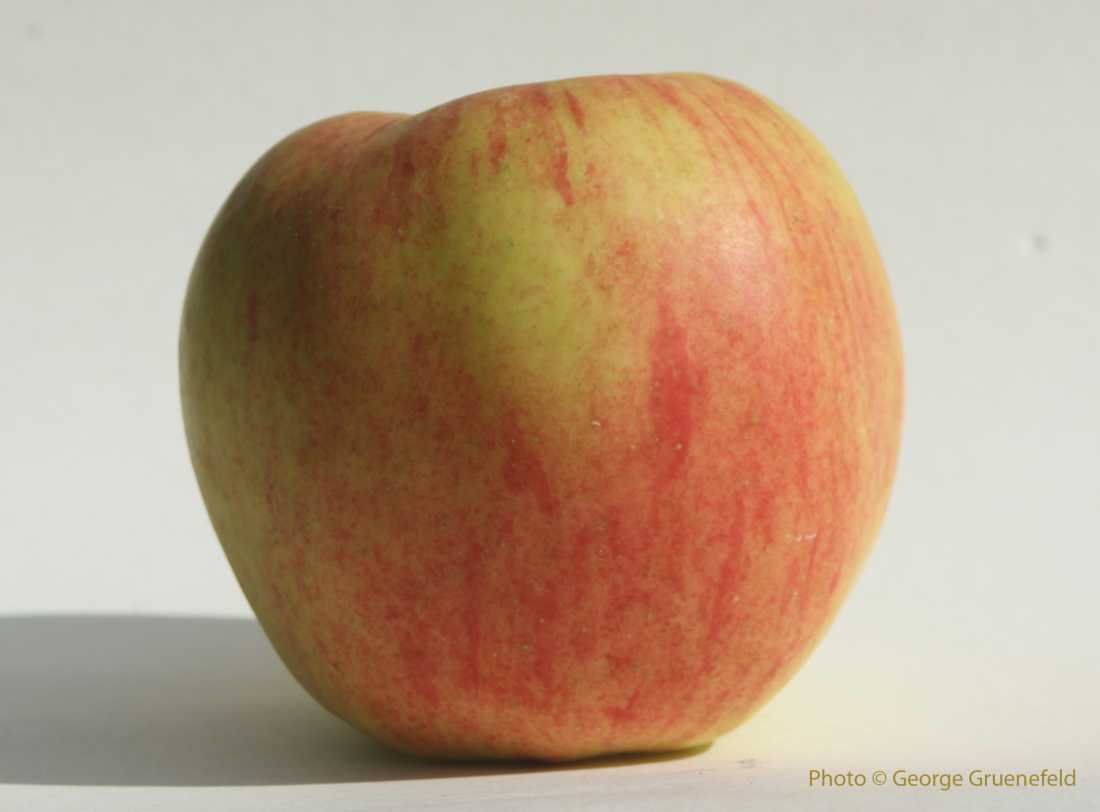Pomiferous
Welcome to the world's most extensive apples (pommes) database.
Information on over 7,000 apples is available here, all carefully researched and provided in a way that is easy to navigate.
Gravenstein

type: Culinary, Cider, Dessert, Juice, Pie, Sauce
synonyms: Graasten, Grafenapfel, Gravenstein, Gravensteiner, Grafensteiner, Banks Red, Early Congress, Tom Harryman. Also, sometimes referred to as Yellow Gravenstein which is actually the designation now given to the original Gravenstein. Red Gravenstein is the name of a mutation of the original Gravenstein.
summary: A good, sweet-tart eating apple if fully ripened on the tree. However, it is most commonly used green as a cooking apple for apple pies and sauce, but creates a lot of fluid when cooked. Sometimes also used for juice and cider. It is the key ingredient in the production of Obstler, an Austrian fruit brandy.
identification: Medium to large apple, oblong in shape, sometimes irregular and lopsided. Look for rounded ribbing at the crown. The slightly waxy skin is green maturing to bright yellow over which are scattered reddish stripes and sometimes a reddish-copper blush on the sun exposed face. A moderately small and partially open calyx sits in an open basin. The stem is very short to medium length and stout, set in a deep, angular, russetted cavity.
characteristics: Flesh is tender, finely textured, yellowish and crisp. Well balanced sweetness and tartness. Savoury and spicy. The fruit is stellar when allowed to ripen fully in a warm climate, but tends to be acidic and thin when grown in a cool climate.
origins: Two stories purport to provide the variety’s origin. One has it that the apple originated in Italy (possibly known as the Calville Blanc) and sometime in the 1660s, scion wood from these trees was sent to Gråsten Castle in Jutland (Denmark) where it was propagated. The other story has it that the variety was grown from seeds (possibly from Holland) received at Gråsten Castle (Gråsten is Danish for Gravenstein). The German version – Gravensteiner – was accepted as the cultivar’s proper name. There seems to be no record of its parentage.
cultivation: A highly vigorous, upright spreading tree that grows rather large, so it needs to be grafted to somewhat dwarfing rootstock. On its own roots, it starts to set fruit as a three- to four-year-old tree and yields modest harvests with a tendency to bear best every other year if not thinned shortly after petal drop. Partial tip bearer. Grows well in damp coastal climates. Hardy. Prefers moist soil. The blossoms are sensitive to frost.
progeny: James Lawson
mutations: In an attempt to make this apple more commercially acceptable, orchardists have consistently selected more coloured mutations of the original green/yellow and somewhat lightly coloured Gravenstein.
cold storage: Keeps less than three months.
vulnerabilities: Prone to canker, scab, rust and very much so to mildew. Moderately susceptible to fireblight. Treat with calcium if bitter pit and water core are a problem. Sensitive to copper which is a primary ingredient Bordeaux mix.
harvest: Starting the early part of the fourth period (110 to 130 days after petal fall) and continuously provides ripening apples for over a month, but the apples tend to drop on ripening and sometimes earlier when the crop is particularly heavy.
notes: The Gravenstein was adopted as the national apple of Denmark in 2005.
pollination group: A
pollination peak: 3
ploidism: Triploid. The Gravenstein and its many mutations do not provide viable pollen to itself or other trees.
cold storage weeks: 12
brix: 11.5
acidity: 7.2
harvest period: 4
hardiness: 2
sg: 1.0462
Donate a cider?
©2016-2021 Pomiferous.com. All rights reserved